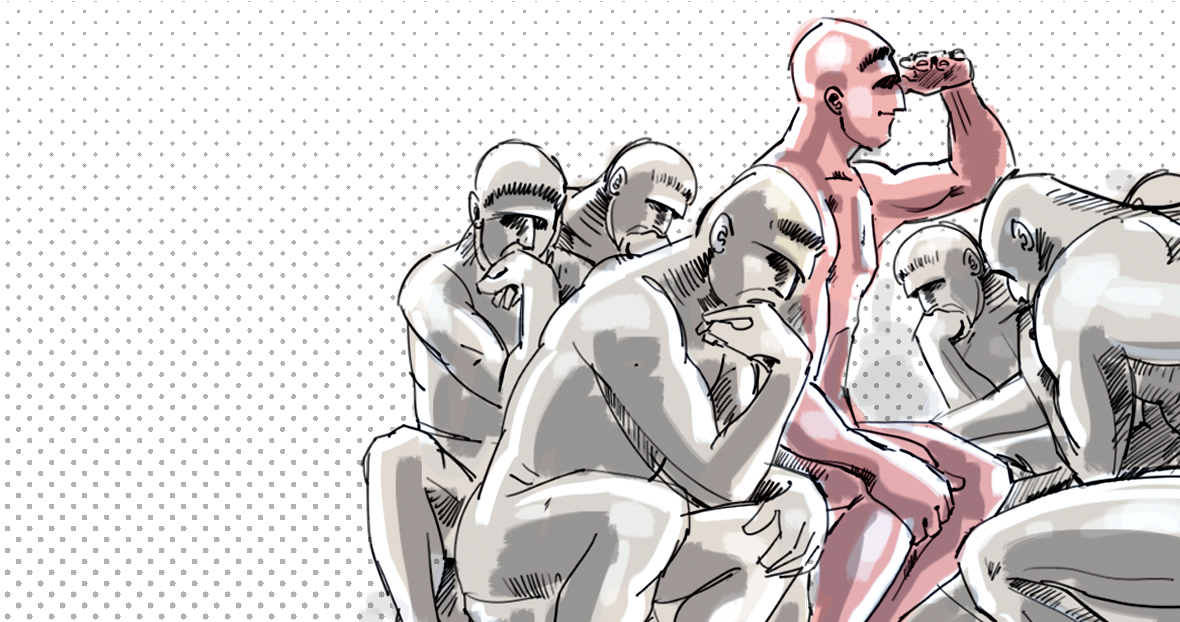
The reason companies get stuck is because their thinking gets stuck. This especially applies to senior leaders, who are vulnerable to two deadly traps:
- 1. They get stuck in the thinking that used to work – that created success in the past
- 2. They get stuck urging the rest of the firm to change, but resisting change in their own perception and thinking
“The issues outside are a mirror of the issues inside…” (C. Otto Scharmer, MIT)
Executive teams are under intense pressure to transform their companies into more sustainable, faster growing, more nimble and more dynamic organizations. Shareholders demand this – especially activist investors – even though economic growth rates remain very low in most developed countries.
At the same time, technological, social and cultural change are significantly altering customer expectations and behavior – in both B2C and B2B markets – making it harder for companies to see a clear path to continued growth and profitability.
In other words, leadership teams know their company needs to change, but are not sure how. So change initiatives continue forward, most of them to disappointing outcomes. Roughly 70% of business transformations fail, or fall short of their defined objectives.
Most classical business transformations are not run as a continuous process, but rather as a discontinuous project or program. They primarily address changing things such as a formal vision, mission, strategy, process, structure, or system. This is important, yes, but it is not enough.
Unfortunately, most transformations fail to change the ways that leaders think and act. As a result, transformations stop far short of where they need to be, or the organization simply reverts to its original state.
If all you do is to change how an organization makes and moves things, all you will get is superficial change.
To create lasting change, you have to be willing to challenge and change your thinking.
“We cannot solve our problems with the same thinking we used when we created them…” (Albert Einstein)
When we say this to executives, they don’t always immediately hear what we mean. Many hear something like this:
- I need to try new ways to convince others to act the way I want them to act.”
- “I need to work harder than ever to make my strategy work.”
“I need to test new ways to implement my plan.”
None of these capture what we are trying to share with you.
If you are leading an organization and wish to change its path, first you must be personally open to new ways of thinking. You must be open to changing how you perceive and think.
Key questions that you need to ask and answer in this context are:
- Do I mindfully perceive the rapidly changing environment and systemic interrelations around me, or is my reasoning dominated by preconceived opinions or instinct?
- Are my decisions based on accurate perceptions and open thinking, or are they dominated by jumping to conclusions?
- On which belief system(s), thought patterns and assumptions do I and my fellow leadership team members base our thinking and decision-making? Are these still valid and helpful for today’s dynamically unfolding challenges? If not, how can we create new ones?
- Are we aware that the current business environment and our general corporate conditions create various dilemmas, which we cannot overcome within the boundaries of our old thinking?
- Do we as a leadership team properly utilize the power of collective perception, deep dialogue and joint creativity to refocus our purpose and direction?
- Consequently, how can we establish a continuous process that makes perception and thinking an ongoing transformational leadership task that will positively influence how we make decisions and create meaningful business transformation?
If and when you master such openness, you create the conditions necessary for change within your organization – you start fostering a culture in which openness, agility and continuous transformation becomes the norm, and formal business transformation programs become unnecessary.
To illustrate, let us use a simple example. If the Board of Directors of a corporation wishes to effect significant and lasting change, they have two choices:
Replace the leadership team
Support the leadership team to adopt new thinking
Thought patterns to drive meaningful change are usually a blind spot, more or less ignored as transformational scope. There is no transformation plan that involves current management using its longstanding thought patterns to drive meaningful change. However, if you don’t change, your company won’t either.
Transformational change is the product of an ongoing cycle in which an organization both changes thinking as well as things. This creates a culture and organization capable of dynamically responding to increasing volatility and permanent change in the world around you. Instead of getting stuck in old patterns, you constantly seek out better ways to think, act, serve and compete.
Analysts and business critics say that companies get stuck, but this is true only at a symptomatic level. In truth, companies get stuck when leadership thinking gets stuck.
© Radius 1 Consulting GmbH





